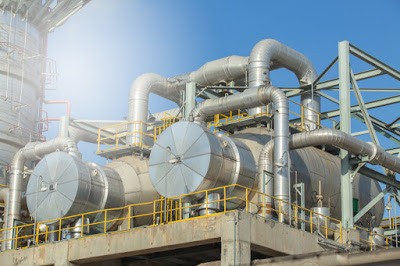A plate heat exchanger is an innovative type of cooling device that makes use of metal plates in order to transfer heat from one fluid to another fluid. This has a number of advantages over a traditional heat exchanger in which the liquids are placed on flat, smooth surfaces. In such devices, the liquids cool as they pass through the metals and this causes them to form droplets. The cooled droplets are then allowed to attach to the sides of the plates and this is how heat is taken into the room and transferred to the appropriate areas. As the name suggests, plate heat exchangers are commonly used in the manufacturing industry in order to regulate the temperature in various processes and that is why they are so popular.

There are four types of plate heat exchangers that are generally used. They include the single-piece unit, double-piece unit, uPVC Plate Heat exchangers, and polymeric mesh (Hex exchangers). The first two are a single piece unit where the top cover is removed and replaced with a new one, the bottom plate is attached on the same spot as the top cover and can be removed and replaced, while the last is a mesh unit in which the bottom surface is not easily removable. All four of these have their own advantages and depending on the size of the job and the industry where it is going to be carried out will depend on which type should be used. Let's look at each in turn.
The single-piece plate heat exchanger is one that has a number of metal plates, which are all connected to each other and the fluid that is going to be cooled is pumped between the individual plates via a cooling tube. As the fluid passes through the tubes, the varying temperatures cause the fluid to expand and contract, hence causing the temperature of the surrounding fluid to cool. The only disadvantage of this design is that you will need a large amount of space to place such an exchange, and you will also need to make sure that there is a sufficient amount of cooling air available for the same reason. The downside to this type of cooling unit is that it is susceptible to the failure of the cooling tubes which can cause serious damage to the equipment.
The two-piece unit operates in much the same way, with the only difference being the number of plates that need to be involved. This increases the chances of the efficiency of the plate heat exchanger increasing as the number of plates increase. The main problem with this type is that in order to use two-fluid packages you must have a large amount of space. It also means that two different packages with different efficiencies can't be used together, which increases the risk of the efficiency levels of the packages decreasing.

The uPVC Plate Heat exchangers use a solid rubber ring to surround the incoming and outgoing plates. There are essentially two ways that these units can operate, the first way is known as the unipolar system, where there are only two plates and the other requires a three or more plate system. In the unipolar process, there is very little variation in the fluid flows, which makes it efficient and very reliable. The disadvantage of using uPVC gaskets is that it is prone to damage due to friction, static electricity and warping. This is because the constant changing of the pressure causes small tears in the plastic seal, which allows air to mix with the liquid flowing through.
The solid rubber ring that is used to surround the incoming plate is known as the bipolar system, and the two types can be combined for greater efficiency. They provide higher efficiency than their uPVC counterparts but are vulnerable to damage due to the friction created by the fluid. The best way to protect these units is to make sure that they are placed on the outside of the building, in an isolated area. This will protect them from any damage due to thermal fluctuations as well as prevent the fluid and the gasket from mixing, which leads to damage.
Read More: The Benefits of a Plate Heat Exchange Unit
View more here: Promec Engineering Pty Ltd

